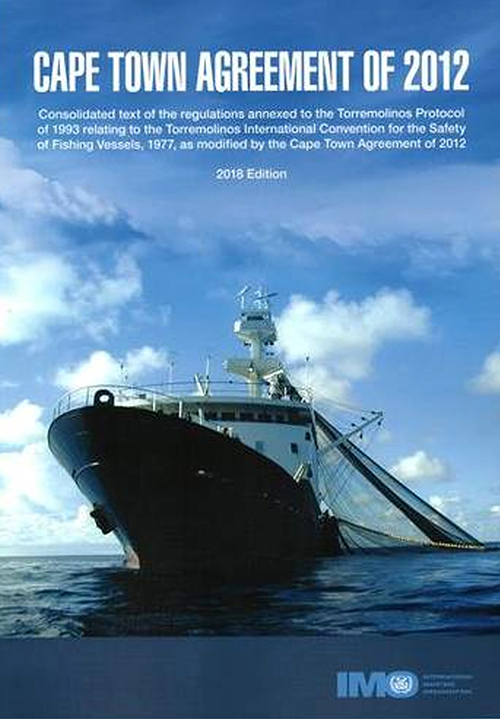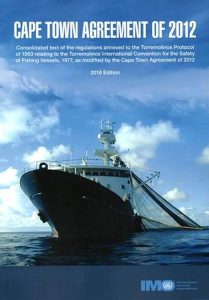A Global Commitment to Safer Working Conditions at Sea
Why Fishing Vessel Safety Is a Global Priority
Fishing is one of the most dangerous professions in the world. Thousands of fishers lose their lives each year due to unsafe vessels, poor equipment, and lack of international standards. Unlike cargo ships or cruise liners, fishing vessels often operate far from regulatory oversight—especially smaller boats in developing nations. But a significant international effort is underway to change that.
The Torremolinos International Convention for the Safety of Fishing Vessels (SFV) was created to bring uniform safety standards to fishing fleets worldwide. Despite challenges in adoption, it remains a vital tool for reducing maritime accidents in the global fishing industry. Whether you’re a student of maritime law, a government policymaker, or simply someone who cares about ocean safety, this article will guide you through what the SFV is, why it matters, and where it’s headed.
What Is the SFV Convention?
The Torremolinos International Convention for the Safety of Fishing Vessels (SFV) is a treaty adopted by the International Maritime Organization (IMO) to set minimum safety standards for fishing vessels over a certain size.
Key Facts at a Glance
-
Adopted: October 2, 1977, in Torremolinos, Spain
-
Revised: 1993 and later in 2012 (Cape Town Agreement)
-
Applies to: Fishing vessels 24 meters or longer, or those operating in international waters
-
Administered by: The IMO
The Convention covers construction, equipment, stability, fire safety, crew accommodation, and lifesaving appliances, aiming to protect the lives of fishers and promote sustainable practices in fisheries management.
Historical Background and Evolution of the SFV Convention
Before the 1970s, there were no binding international standards for fishing vessel safety. This lack of regulation contributed to high fatality rates in commercial fishing operations. The original Torremolinos Convention of 1977 attempted to address this, but it faced slow ratification due to:
-
Economic concerns from developing nations
-
High implementation costs for vessel owners
-
Lack of global political momentum
To respond to these issues, the IMO adopted:
-
1993 Torremolinos Protocol – Made key adjustments to encourage wider adoption.
-
2012 Cape Town Agreement – Aimed to replace the earlier SFV versions and promote entry into force by reducing political and legal obstacles.
Each revision improved the Convention’s clarity, technical standards, and applicability to more countries, moving toward global acceptance.
Core Objectives and Provisions of the SFV Convention
The SFV Convention focuses on ensuring that fishing vessels are constructed and maintained to minimize the risk of accidents and provide a safer working environment for fishers.
Main Provisions Include:
-
Structural Integrity: Clear requirements for hull construction, watertight bulkheads, and materials.
-
Stability and Seaworthiness: Standards to prevent capsizing and enhance safety in rough waters.
-
Machinery and Electrical Installations: Regulations for propulsion systems, engine room layout, and electrical wiring.
-
Fire Safety: Design and equipment guidelines to reduce fire hazards onboard.
-
Life-Saving Equipment: Mandatory lifeboats, life jackets, emergency beacons (EPIRBs), and communication tools.
-
Crew Accommodation and Habitability: Provisions for sanitation, ventilation, rest areas, and health facilities.
Each vessel must undergo periodic inspections and certifications to prove compliance with SFV requirements.
Importance of the SFV Convention for Various Audiences
For Beginners and General Readers
The SFV Convention helps ensure that the people who catch our seafood do so safely. Many fishing vessels operate in harsh, remote environments, often without access to immediate rescue. The SFV aims to reduce risks and standardize safety rules globally.
For Students and Researchers
The SFV provides an important case study in international maritime law, labor rights, and ocean governance. Scholars can explore its evolution, adoption rates, and comparisons with conventions like SOLAS (Safety of Life at Sea) or the MLC (Maritime Labour Convention).
For Professionals and Experts
Shipbuilders, naval architects, classification societies, and port state control officers use the SFV as a technical blueprint. Fisheries managers and policy advisors reference the Convention when drafting national legislation, conducting vessel inspections, and educating fishing communities.
Real-Life Impact and Global Applications
Practical Applications
-
National Laws Aligned with SFV: Countries like Norway, Canada, and New Zealand have incorporated SFV standards into their national regulations.
-
Fishing Vessel Modernization Projects: In countries like Indonesia and the Philippines, modernization programs based on SFV standards have improved vessel safety.
-
Training and Awareness: IMO-supported training workshops are conducted globally to raise awareness about SFV implementation.
Case Studies
-
South Africa’s Adoption Efforts: As a major fishing nation, South Africa has aligned its laws with the Cape Town Agreement and conducted SAR (Search and Rescue) drills as part of SFV compliance.
-
Bangladesh’s Fishing Fleet Upgrade: With support from the IMO, Bangladesh has launched initiatives to upgrade wooden boats to steel-hulled, SFV-compliant designs.
Recent Trends and Developments
1. The Cape Town Agreement (CTA) of 2012
Recognizing that the original SFV Convention failed to enter into force, the Cape Town Agreement (CTA) was introduced as a politically acceptable solution. It simplifies requirements and allows flexibility for developing nations while preserving essential safety standards.
As of early 2025, over 21 countries have signed the Cape Town Agreement, representing more than 50% of the world’s fishing fleet by tonnage—a critical milestone for enforcement.
2. Digitalization and Safety Technologies
Modern vessels are now equipped with:
-
AIS (Automatic Identification System)
-
VMS (Vessel Monitoring Systems)
-
EPIRBs and PLBs (Emergency Position-Indicating Radio Beacons, Personal Locator Beacons)
-
Real-time weather updates for route planning
These tools, when combined with SFV structural standards, drastically reduce fatalities and lost-time incidents.
3. Integration with ILO and FAO Efforts
The SFV Convention intersects with:
-
FAO’s Code of Conduct for Responsible Fisheries
-
ILO’s Work in Fishing Convention (C188)
This multi-agency cooperation ensures that vessel safety is aligned with crew welfare and environmental sustainability.
Challenges to Global SFV Implementation
Despite its importance, the SFV Convention still faces multiple challenges.
Key Barriers
-
Cost of Compliance: Smaller operators often lack funds to retrofit old vessels or purchase new SFV-compliant boats.
-
Lack of Awareness: Many fishers and boat owners are unaware of international standards.
-
Limited Enforcement: Port states may not inspect fishing vessels as strictly as commercial ships.
-
Political Will: Some nations hesitate to adopt the Convention due to potential impacts on artisanal fishing communities.
Efforts to overcome these include capacity-building programs, technical cooperation, and regional fisheries partnerships.
Frequently Asked Questions (FAQs)
What is the Torremolinos Convention?
The Torremolinos Convention is an IMO treaty designed to establish safety standards for fishing vessels longer than 24 meters or operating on the high seas.
Has the SFV Convention entered into force?
The original 1977 version did not. However, its successor—the Cape Town Agreement of 2012—is gaining traction and is expected to enter into force once ratified by more states.
What is the difference between SFV and SOLAS?
SOLAS covers commercial ships like tankers and cargo vessels, while SFV focuses specifically on fishing vessels, which have different operational profiles and risks.
Do all fishing vessels need to comply?
No. The SFV primarily targets vessels over 24 meters in length. However, many smaller boats voluntarily adopt its guidelines for safety.
Conclusion: A Safer Future for Fishers Worldwide
The Torremolinos International Convention for the Safety of Fishing Vessels (SFV) represents a landmark effort in improving maritime safety for a historically neglected sector. By establishing clear international standards, it addresses one of the most dangerous and underregulated maritime sectors.
While implementation remains uneven, momentum is building—especially with the Cape Town Agreement gaining support. The future of fishing vessel safety depends not only on international law, but also on education, investment, and cooperation at all levels.
📢 Call to Action:
If you’re a policymaker, educator, or industry professional, explore how your country or organization can support SFV compliance and protect fishers at sea. Visit:
References / Further Reading
-
International Maritime Organization (IMO). Torremolinos and Cape Town Agreements.
-
Food and Agriculture Organization (FAO). Responsible Fishing Practices.
-
International Labour Organization (ILO). Work in Fishing Convention (C188).
-
World Maritime University. Fishing Vessel Safety and Human Element Reports.
-
Pew Charitable Trusts. Safer Oceans and the Cape Town Agreement Campaign.


